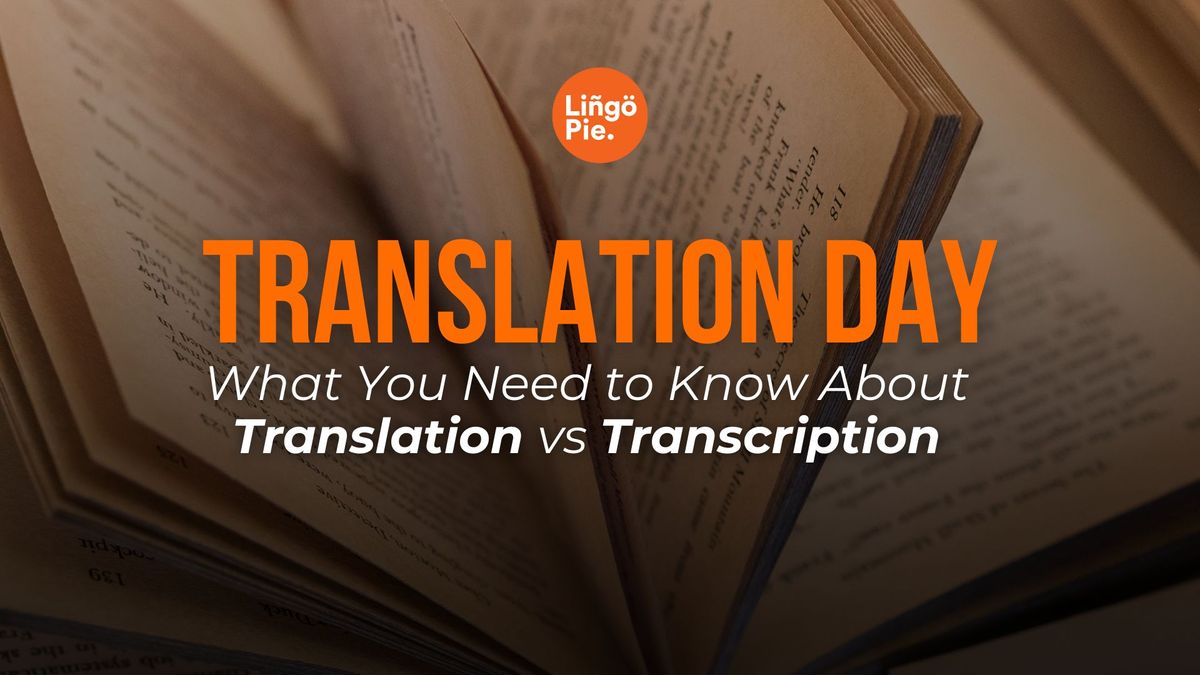Have you ever watched a foreign film and marveled at how the subtitles capture not just the words, but the essence of what's being said? Or perhaps you've listened to a podcast and wondered how the transcript manages to convey every 'um' and 'ah' so precisely?
As we celebrate International Translation Day on September 30th, it's crucial to understand the distinct roles of translation and transcription in language services. While both are essential in breaking down language barriers, they serve different purposes and require unique skill sets.
Want to learn more about language learning? Check out our popular posts below!
- 12 Zodiac Signs In French: How To Talk About Your Sign
- Dr. Mrs. Vandertramp Verbs: 3 Easy Tricks For Beginners
- 5 Easiest Asian Languages To Learn: Ranked
What is International Translation Day?
International Translation Day, observed annually on September 30th, coincides with the feast day of St. Jerome, the patron saint of translators. In 2017, the United Nations General Assembly officially recognized this day, underscoring the vital role that language professionals play in fostering global peace, understanding, and development.
So, what's this day all about? It's more than just a pat on the back for translators and interpreters. It's a day to:
- Raise public awareness about the importance of translation in our globalized society
- Provide opportunities for professional development through workshops and conferences
- Focus on different aspects of the translation profession through annual themes set by the International Federation of Translators (FIT)
- Celebratr linguistic diversity and cultural exchange through worldwide events
Now, let's get to the heart of the matter. You've probably heard both terms thrown around, but what exactly sets translation and transcription apart?

Translation Vs. Transcription
Understanding the differences between transcription and translation is a must-know for anyone dealing with language services. While both processes involve converting information from one form to another, they serve distinct purposes and require different skill sets.
Translation
Translation is the process of converting written text from one language (the source language) to another (the target language). It involves:
- Interpreting the meaning of the original text
- Adapting those tricky idioms and cultural references
- Maintaining the tone and style of the original content
- Ensuring the translated text conveys the same message as the source
Basically, translators need strong language skills in both the source and target languages. They must understand cultural nuances to accurately convey meaning. Good writing ability in the target language is also essential to produce natural-sounding translations.
More importantly, translators should specialize in specific fields like law, medicine, or technology, so they can provide a more in-depth translation in these areas.
Example:
Original (English): "It's raining cats and dogs."
Translation (Spanish): "Está lloviendo a cántaros." (Literal: It's raining buckets.)
Note: This example shows how idiomatic expressions often can't be translated literally but must be adapted to convey the same meaning in the target language.
Transcription
Transcription, on the other hand, is the process of converting spoken language into written text, usually within the same language. It involves:
- Listening to audio or video recordings
- Writing down the spoken words verbatim
- Including non-verbal cues like pauses, laughter, or background noises (in some cases)
- Focusing on accuracy in capturing the spoken content
Transcriptionists need excellent listening skills to understand various accents and speech patterns. Usually, this also entails that they have fast, accurate typing skills as well. They must have a solid grasp of grammar and punctuation to create readable transcripts. In specialized fields, knowledge of specific terminology is also valuable.
Example:
Spoken: "Um, I think... yeah, I think we should definitely consider that option."
Transcription: "[pause] Um, I think... [pause] yeah, I think we should definitely consider that option."
Key Differences Between Transcription And Translation
So, how do these two skills stack up against each other? In this section, I highlighted four key areas where transcription and translation diverge: the languages involved, the medium of the content, the skills required, and the overall purpose of each task.
Language Change:
- Translation: Always involves changing from one language to another
- Transcription: Typically occurs within the same language
Medium:
- Translation: Deals with written text
- Transcription: Converts spoken language to written form
Skills Required:
- Translation: Requires bilingual proficiency and cultural knowledge
- Transcription: Requires excellent listening skills and typing speed
Purpose:
- Translation: To make content accessible across languages
- Transcription: To create a written record of spoken content
In some cases, these processes can be combined. For instance, when creating subtitles for a foreign film:
- Transcription: The dialogue is first transcribed in the original language
- Translation: The transcribed text is then translated into the target language
This combination ensures that viewers can read accurate subtitles that match both the timing and meaning of the spoken dialogue.

Movies That Show the Importance of Translation
Hollywood has long recognized the power of language barriers and the role of translators. In this section, let's go over the popular films that reflect the challenges and comedic potential of translation mishaps.
- "Lost in Translation" (2003): This movie isn't all about translation, but it shows how hard it can be to understand a new culture. Bill Murray plays a character who has trouble with Japanese signs and words. It's funny and sad at the same time.
- "Arrival" (2016): In this movie, Amy Adams plays someone who has to figure out how aliens talk. It shows us that understanding a new language is about more than just words.
- "The Interpreter" (2005): Nicole Kidman plays a person who translates at the UN. She hears about a plan to hurt someone and has to decide what to do. It shows how important good translation is in world politics.
- "Everything Everywhere All at Once" (2022): This movie has people speaking English, Chinese, and Cantonese, sometimes all in one sentence! It's like real life for many people who speak more than one language.
These films remind us that language isn't just about words—it's about connection, understanding, and sometimes, hilarious misunderstandings. They underscore why skilled translators and interpreters are super in demand today!
Learn Languages With Lingopie
As we've seen, translation and transcription play important roles in breaking down language barriers and preserving spoken content. These processes allow us to access a wealth of information and entertainment from around the world. But what if you could take this knowledge and apply it to your own language-learning journey?
This is where Lingopie's features come in, offering a unique approach to language acquisition. By providing hit TV shows and movies with dual subtitles - one in the original language and one in your native tongue!
With Lingopie, you'll get to pick up idioms, cultural references, and complex phrases as spoken by your favorite characters! So what are you waiting for? Give Lingopie a try today!






![5 Official Spanish Language Tests To Show Your Proficiency Level [Guide]](/blog/content/images/size/w300/2025/06/Spanish-Language-Tests.jpg)
![Why Memorizing Spanish Words Won’t Make You Fluent [Tips]](/blog/content/images/size/w300/2025/06/how-to-practice-spanish-vocabulary.jpg)
![How to Improve Your Polish Conversation Skills [5 Best Tips]](/blog/content/images/size/w300/2025/06/improve-polish-conversation-skills.jpg)
